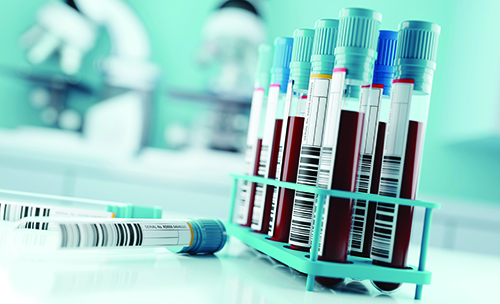
Trace elements, also known as heavy metals, are found in the human body in very small concentrations, ranging from parts per million to parts per billion. Some trace elements (e.g., chromium, cobalt, copper, iron, manganese, molybdenum, selenium, zinc) are essential for biological processes in humans. Deficiencies in these elements can have adverse clinical manifestations that are reversed by supplementation. In excess amounts, some of these metals can be harmful.
Other metals, such as aluminum (Al), arsenic (As), beryllium (Be), lead (Pb), and mercury (Hg) do not have known biological functions and are toxic. Heavy metal poisoning may occur from occupational and environmental exposures, food and medicine, or lead-based paints.
For all these metals, clinical laboratories perform trace element testing in biological samples, either to assess patients’ nutritional status or detect toxicity.
Sample Collection Is Critical
The validity of trace element results very much depends on taking steps to collect the sample adequately. To prevent contamination, laboratories list acceptable collection devices and procedures. The best practice for blood collection is to utilize certified trace metal-free tubes (i.e., royal-blue top, available with and without anticoagulant) or lead-free tubes (i.e., tan top).
Some laboratories may accept specimens in nontrace metal-free tubes if the preferred tubes are not available, such as during shortages. A recent example is utilizing EDTA lavender-top tubes for lead testing and adding a disclaimer in the result to alert that the container was not metal-free. Tube contamination and erroneous results due to this practice have been reported numerous times. The Centers for Disease Control and Prevention (CDC) (www.cdc.gov/nceh/lead/lab) offers educational tools for proper venous and capillary sample collection.
For sample collection from children, elevated lead from a capillary collection is suspected of contamination and followed up by a second test from a venous sample. A sample should not be collected in patients receiving contrast material containing gadolinium (Gd), iodine (I), or barium (Ba) within 96 hours. Metal-based contrast agents interfere with trace metal analysis.
Selecting Trace Element Analysis Methods
The method of choice for trace element analysis is inductively-coupled plasma mass spectrometry (ICP-MS), due to its sensitivity and multi-element quantification. This method uses plasma heated at temperatures up to 10,000 K to ionize the sample, and specific isotopes that are detected by mass spectrometry.
Some clinical laboratories also perform elemental analysis by atomic absorption spectrophotometry (AAS). In graphite furnace AAS, as a sample is heated by a flame, elements absorb light at a certain wavelength that is detected by a spectrophotometer. For context, participants of a recent proficiency testing survey by the College of American Pathologists mostly analyzed lead by ICP-MS (54%), followed by AAS (39%). Other heavy metals were universally reported using ICP-MS.
Despite the advantages of ICP-MS, this method has some shortcomings. ICP-MS is more expensive, requires higher technical expertise for method development, and is affected by spectral interferences (e.g., isobars, doubly charged or polyatomic species with the same m/z ratio as the element of interest). With modern instruments, we can overcome most spectral interferences, since ICP-MS instruments are equipped with a collision or reaction cell (CRC). Depending on the instrument, interferences may be removed by promoting a reaction between a reactive gas (e.g., O2 or H2) and the interferent or analyte, or by combining a nonreactive gas, like helium, with kinetic energy discrimination, which will discriminate against large polyatomic species, among other approaches.
Technology developments to remove isobaric interferences in ICP-MS have continued. Most recently, ICP-tandem mass spectrometers (ICP-MS/MS or ICP-QQQ) have become commercially available. The first quadrupole (Q1) prefilters ions with a certain m/z ratio to enter the cell, and the other quadrupole (Q2) detects the target m/z ratio after the CRC reaction. Balcaen and colleagues have reviewed this technique in detail (Anal Chim Acta 2015; doi: 10.1016/j.aca.2015.08.053).
One current application of ICP-MS/MS in clinical laboratories is the accurate determination of selenium, unaffected by gadolinium-based imaging contrasts. Gadolinium is doubly charged (156Gd2+) under ICP conditions, and it interferes with selenium assays using the 78Se isotope. To accurately quantitate Se in the presence of Gd, Q1 filters the m/z ratio of 78, O2 reacts with Se in the CRC, and the m/z ratio of 94 for 78Se16O+ is detected by the Q2.
The ICP-MS/MS technology is still relatively new and not widely used in clinical laboratories. Nevertheless, its robustness in removing interferences in biological and other complex matrices while maintaining sensitivity to detect trace elements is promising for clinical applications.
Jessica Colon-Franco, PhD, DABCC, FADLM, is section head of clinical biochemistry and medical director of special chemistry at Cleveland Clinic Laboratories in Cleveland, Ohio.+Email: [email protected]